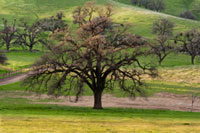Book Review: “History for Genealogists”

When I envision a commercial for this book, it would have to be a full infomercial rather than a short spot between segments of a favorite program. Timelines are well known tools for genealogy, and are my go-to tool for unraveling mysteries. This book contains historical timelines and so much more. Ms. Jacobson gives context to the timelines, which in turn add context to the genealogical research of individuals and families.
Using history in our genealogy is that extra step to bring our research to a higher level by understanding our ancestors’ lives in the context of the world around them. It is common to hear others suggest going out on the web to find events to add to our timelines. How do you choose what to add? What timeline do you look at? Our ancestors made changes for a reason, and this book provides us with matter and timelines about the reasons motivating those changes.
Among the many things discussed in the book was the role of Europeans coming to the US to farm. Since my ancestors lived in cities, I had not previously investigated this topic in depth. Railroads received large grants of land from the federal government, and so set up a system for Europeans to purchase land and then travel to occupy it. More than transporting people, they had actually streamlined the process of coming to the United States.
The chapter about oral histories impressed me. It was a succinct but rich outline of how to conduct them. The author’s motivating words say it best: “Oral history can put the soul and flesh on the skeleton of a pedigree chart.” This quote applies to the intent of the whole book.
This book is a good starting place with historical timelines relevant to genealogical research. This book contains a timeline for the history of each state and the District of Columbia, from its first beginnings to the 1940s for most locations. The book expands to discuss other geographical regions around the world.
The chapters “Why Did They Leave,” “How Did They Go” and “Coming To America” were thought provoking. Brief case studies show the role of timelines in interpreting an ancestor’s life when viewing it in the context of a bigger history, or if too many events have been attributed to one individual. At all times we are reminded of the interconnection between different counties, and the fluid borders between countries, states and counties.
The 2016 Addendum by Denise Larsen is a separate part of the book, positioned after the original book’s timeline, bibliography and index. The Addendum covers the context and events of the early 20th century in the US up to post-WWII, followed by a timeline about fashion and entertainment.
I read this book cover-to-cover, and can recommend that approach to open a reader’s horizons. However, this book is structured so that it can be used by the chapter applicable to your current research question.
My recommendation is to have maps nearby when reading or using this book. Online maps would be a perfect accompaniment to use when comprehending the interactions between locations and their populations.
“History for Genealogists” provides key historical context and usable information for your research. It also lives up to its subtitle of “Using Chronological Time Lines to Find and Understand Your Ancestors.” As well as being a resource to support your research, it is a solid foundation to jump off from to dig deeper into the more detailed history of a place and time that you are researching. I can see this book being used to complement locality research, by introducing time and events to your research.
The book is available at Genealogical.com and other booksellers.
Note: A review copy was provided by the publisher
This blog post is copyright ©2022 by Margaret M. McMahon, Teaching & Training Co., LLC. All rights reserved. No part of this post may be reproduced in any manner whatsoever without written permission, except in the case of brief quotations in articles and reviews. All copyrights and trademarks mentioned herein are the possession of their respective owners and the author makes no claims of ownership by mention of the products that contain these marks.




